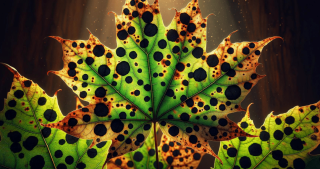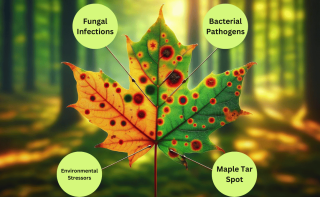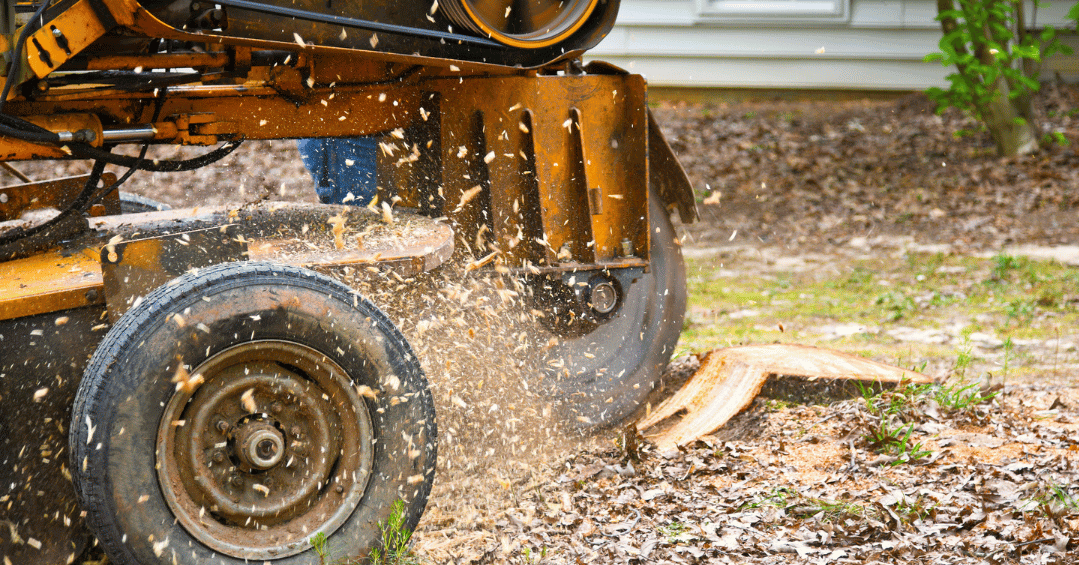Maple trees are beloved for their vibrant foliage. However, when black spots appear on their leaves, it can be concerning for tree enthusiasts. At Strobert Tree Services, we understand the significance of maintaining healthy trees, which involves identifying and addressing issues like black spots on maple leaves. This article will dig deeper into the causes behind these unsightly marks and explore potential solutions to help your maple trees thrive.
What Do Black Spots on Maple Leaves Look Like?
Before we delve into the causes, we must recognize what black spots on maple leaves look like. These spots can vary in size and appearance, ranging from specks to larger patches that cover significant portions of the leaf surface. They may appear as irregularly shaped lesions or spots with defined borders. Often, the surrounding leaf tissue may turn yellow or brown, further highlighting the presence of these black spots.

Common Causes of Black Spots on Maple Leaves
Understanding the underlying causes of black spots on maple leaves is essential for effective management. Several factors can contribute to this issue:
Fungal Infections:
One of the primary culprits behind black spots on maple leaves is fungal infections. Various fungi, such as Rhytisma acerinum (tar spot fungus) and Acer-specific anthracnose fungi, can infect maple trees, developing black spots. These fungi typically thrive in humid environments and may become more prevalent during periods of prolonged moisture.
Bacterial Pathogens:
Specific bacterial pathogens can also cause black spots on maple leaves. These pathogens often enter the tree through wounds or openings in the foliage, where they proliferate and cause damage. Bacterial infections can weaken the tree's immune system, making it more susceptible to other stressors.
Environmental Stressors:
Environmental factors, such as excessive moisture, poor air circulation, and nutrient deficiencies, can contribute to the development of black spots on maple leaves. These stressors weaken the tree's defenses, making it more vulnerable to pathogenic attacks.
What Exactly Is Maple Tar Spot?
The mysterious black spots on maple leaves are not a sign of pollution or chemical damage but a fungal disease known as Maple Tar Spot. This disease primarily infects species like the Norway maple (including varieties such as "Crimson King"), Silver maple, and Freeman's maple. Tar spots manifest late in the season as distinctive black, tar-like spots on the foliage.
Characteristics of Maple Tar Spot
Maple Tar Spot is easy to identify. The disease begins as small, yellowish spots on the leaf surface, gradually expanding into larger, blackened areas. Despite their alarming appearance, these spots are the fungal pathogen's fruiting bodies, releasing spores that continue the infection cycle.
Do Those Black Spots On Maple Leaves Hurt The Tree?
One of the most common concerns regarding tar spots is their impact on the affected trees. Fortunately, despite its unsightly appearance, Maple Tar Spot has minimal effect on a tree's overall health. The disease typically infects leaves late in the season when trees have already completed most of their growth and photosynthesis activities for the year. Thus, while the aesthetic value of the tree may be diminished, the tar spot does not significantly impair the tree's strength or vitality.
Can I Prevent Tar Spot From Happening Again?
While it's challenging to prevent Tar Spot entirely, there are steps you can take to minimize its impact and reduce the likelihood of future infections:
- Rake and Remove Infected Leaves: Removing fallen leaves and debris around the tree can help ease the presence of fungal spores, which can reinfect the tree in subsequent seasons.
- Prune for Air Circulation: Proper pruning can improve air circulation within the canopy, reducing humidity levels and creating an environment less favorable for fungal growth.
- Promote Tree Health: Keeping the tree healthy through proper watering, fertilization, and overall care can help it better withstand fungal infections like Tar Spot.
- Consider Resistant Varieties: If planting new maple trees, select varieties less susceptible to Tar Spot, such as specific Japanese maple cultivars.
Contact Strobert Tree Services - Leaders in Tree Care in Delaware, Pennsylvania, and New Jersey
For expert guidance on managing Tar Spot and other tree care needs, contact Strobert Tree Services. Our team of arborists specializes in tree health and maintenance, serving clients across Delaware, Pennsylvania, and New Jersey. Don't let Tar Spot diminish the beauty of your maple trees—reach out to Strobert Tree Services for professional assistance today!











